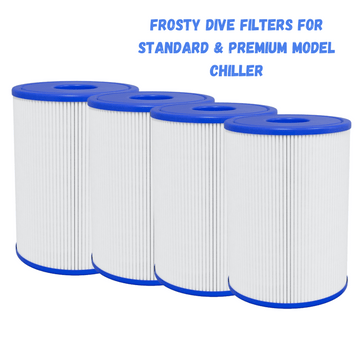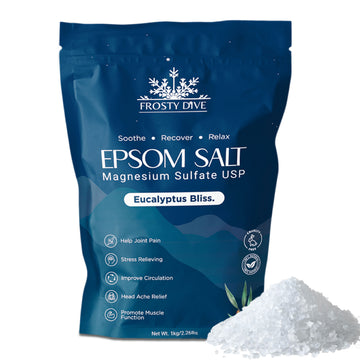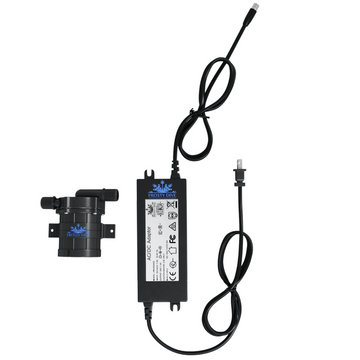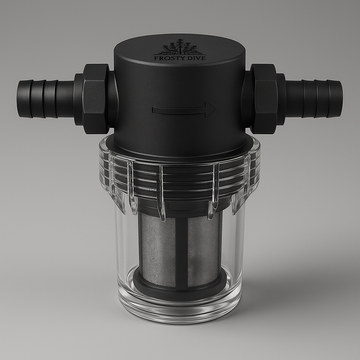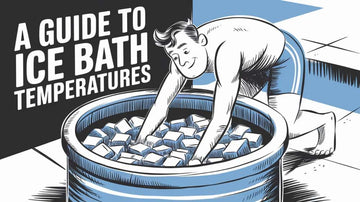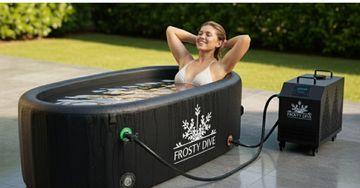Cold water therapy, particularly through ice baths, has gained popularity among athletes and fitness enthusiasts. It is used to reduce muscle soreness, and inflammation, and speed up recovery after intense exercise. But how cold should the water be, and why is the right temperature important? This guide will help you understand the science behind ice baths, why keeping the temperature consistent is crucial for effective recovery, and how to use a water chiller to maintain the perfect cold water bath.
Understanding Cold Water Therapy
Cold water therapy, or ice baths, involves immersing the body in cold water to promote healing. The body’s response to cold exposure has been studied for years. When the body is exposed to cold temperatures, blood vessels constrict, and blood flow to the skin and muscles reduces. This helps decrease swelling and muscle soreness. Once you get out of the ice bath, the blood vessels open up again, bringing fresh oxygen and nutrients to the muscles, aiding in faster recovery.
While the concept of cold water therapy seems simple, there’s a science behind it. The cold helps reduce inflammation, which is a natural response of the body to exercise. However, the temperature of the water matters a lot in getting the best results. Too cold, and it may cause unnecessary shock or damage to tissues; too warm, and it may not provide the same recovery benefits.
The Science Behind Ice Bath Temperature and Its Effects on the Body
The main factor that affects recovery is the temperature of the ice bath. Cold water constricts blood vessels, which helps reduce swelling and inflammation. This process is known as vasoconstriction. When the cold is applied for about 10-15 minutes, it can significantly decrease muscle soreness. After you exit the ice bath, your body begins to warm up, leading to vasodilation, or the expansion of blood vessels. This allows fresh, oxygenated blood to flow back to the muscles, helping to repair and rejuvenate them.
Studies suggest that the optimal temperature for an ice bath is between 50°F and 59°F (10°C - 15°C). If the temperature is much colder than this, it can cause discomfort and may increase the risk of injury or frostbite. On the other hand, if the temperature is higher than 59°F, the benefits of cold therapy are significantly reduced. The goal is to strike a balance where the cold is intense enough to reduce swelling and promote recovery but not so cold that it causes harm.
Why Keeping a Consistent Cold Temperature Is Essential for Recovery
One of the challenges of ice bathing is maintaining a consistent, effective temperature. Fluctuations in water temperature can impact how your body responds to the cold. For example, if the temperature rises too high during the bath, it may reduce the benefits of cold therapy. If it’s too cold for an extended period, your body may go into shock or experience adverse effects, such as numbness or decreased blood flow.
A consistent cold temperature ensures that your body’s natural processes work as intended. When the temperature is steady, your blood vessels respond properly to the cold exposure and dilation afterward. This allows for more efficient muscle repair, reduction in swelling, and overall faster recovery.
Using a water chiller can help you maintain that ideal temperature throughout the session, giving you better control over your recovery process.
How to Adjust the Temperature Using a Water Chiller
A water chiller is a device that helps cool the water to a specific temperature and maintain it. It's an essential tool for anyone who frequently uses ice baths or cold plunges, particularly if you want to avoid the hassle of adding ice manually. But how do you choose the right water chiller, and how can you adjust the temperature for optimal recovery?
Features to Look for in a Water Chiller with Adjustable Temperature Settings
When shopping for a water chiller, there are several important features to consider:
Temperature Control: The most important feature is the ability to set and maintain a specific temperature. Look for models that allow you to easily adjust the temperature, whether it's through a dial, remote control, or digital display.
Capacity: Ensure that the chiller can handle the size of the tub or container you plan to use. If you have a large ice bath setup, you'll need a chiller with enough power to cool a large amount of water effectively.
Cooling Power: The cooling power of a chiller is measured in BTUs (British Thermal Units). A higher BTU rating means that the chiller can cool the water faster, which is essential if you want quick access to an ice bath.
Energy Efficiency: Since you'll be running the chiller frequently, it's wise to choose one that uses energy efficiently. Check for energy ratings to find a unit that won't run up your electricity bill.
Durability: Choose a water chiller made from durable materials that can withstand the constant cooling and usage over time. Read reviews to ensure the chiller you choose has good longevity.
Ease of Maintenance: A good chiller should be easy to clean and maintain. You don’t want to deal with a complicated setup that requires constant attention.
How to Monitor and Adjust the Temperature for Optimal Recovery
Once you’ve chosen a water chiller, setting and monitoring the temperature becomes an easy process. Here’s how to do it:
Set the Ideal Temperature: As mentioned earlier, the best range for an ice bath is between 50°F and 59°F. Start by setting your chiller to this range. You can adjust it slightly depending on your comfort level and how your body reacts to the cold.
Monitor the Temperature: Most modern chillers come with a built-in thermometer or display to show the current water temperature. Keep an eye on it to ensure the water stays within your desired range. Some chillers even have an alarm feature that alerts you when the water temperature goes outside the set range.
Test the Water: Before getting into the ice bath, always test the water with a thermometer. You can also dip your hand or foot into the water to get a feel for the temperature. If it’s too cold or too warm, adjust the chiller accordingly.
Adjust Mid-Bath if Needed: If you’re in the bath and find the temperature isn’t quite right, you can adjust the chiller while you’re still soaking. Some models allow you to adjust the temperature during use, while others may require you to step out and change the settings.
Consistency Is Key: Make sure the chiller is running long enough to maintain a steady temperature throughout your session. If you're using the ice bath for recovery after exercise, try to stay in the bath for 10 to 15 minutes to allow your body to benefit from the full cold therapy effect.
Conclusion
Finding the right temperature for an ice bath is essential for getting the maximum benefits from cold water therapy. Keeping the temperature between 50°F and 59°F (10°C - 15°C) helps to reduce inflammation, promote blood flow, and speed up recovery. A water chiller is a great investment for maintaining a consistent, effective temperature and making your ice bath experience more convenient and controlled. By choosing the right chiller, monitoring the temperature, and adjusting as needed, you can ensure that your ice baths are an effective part of your recovery routine.













